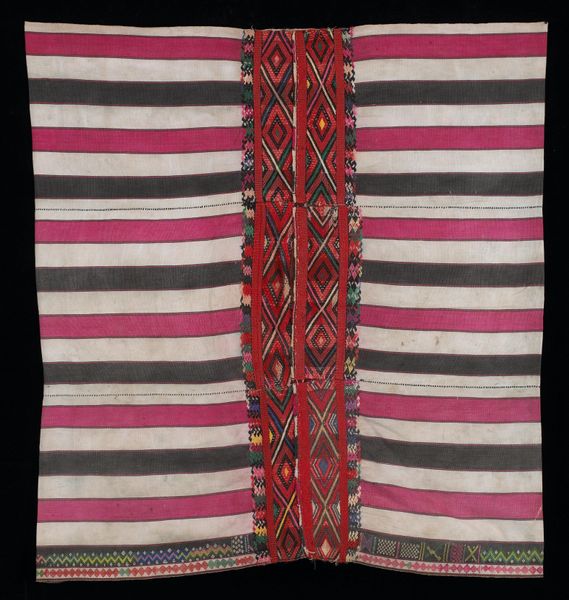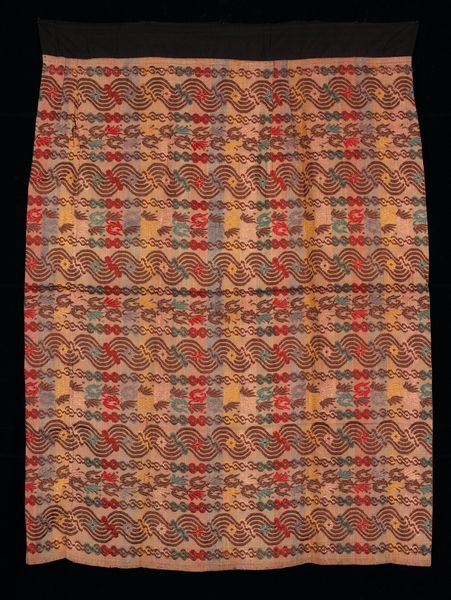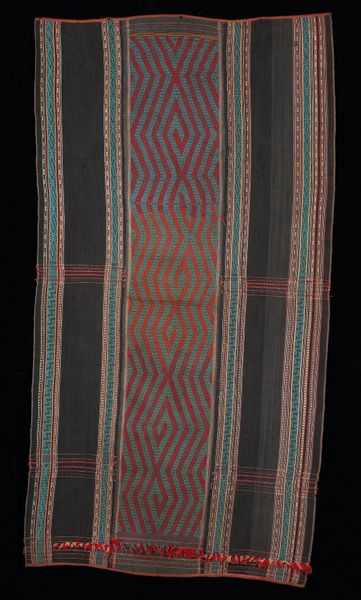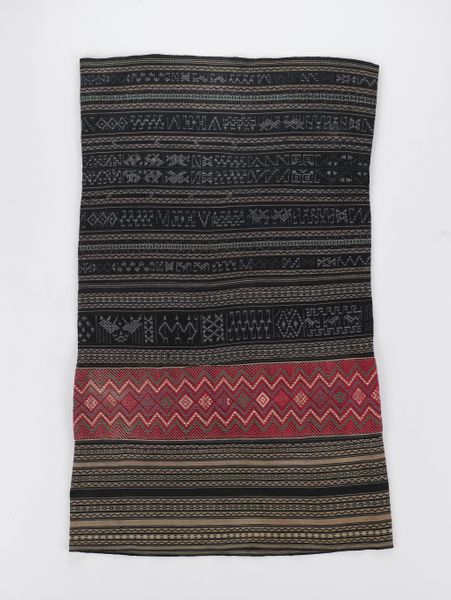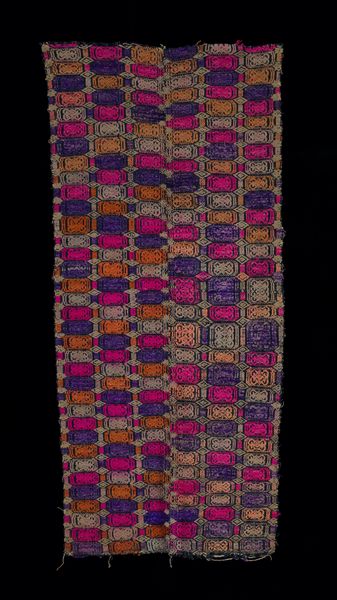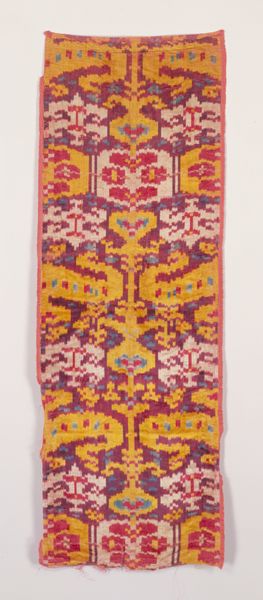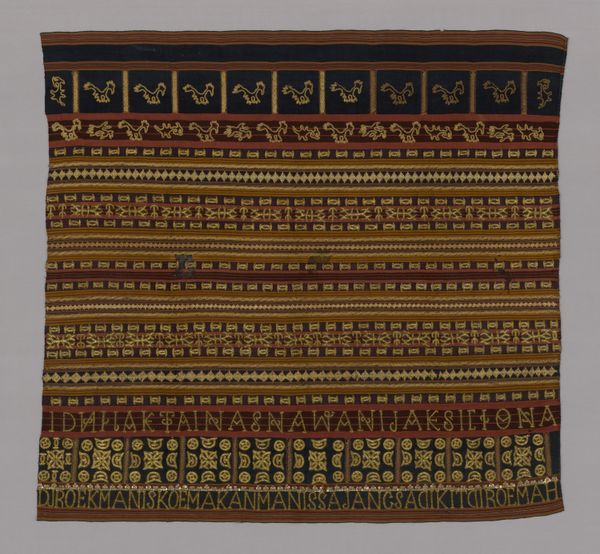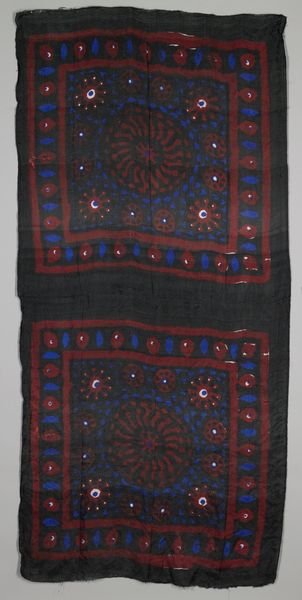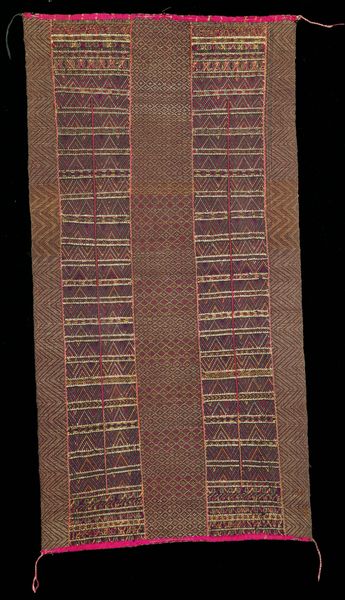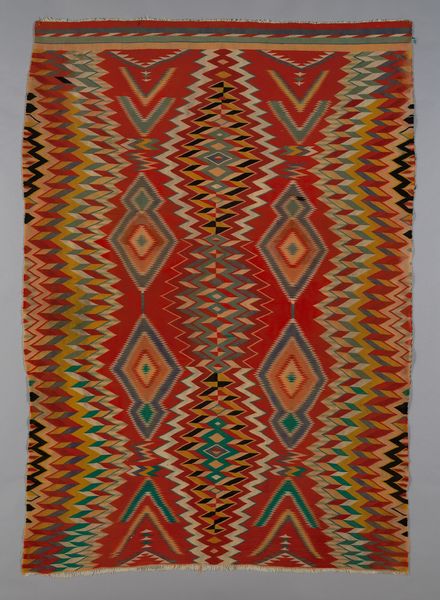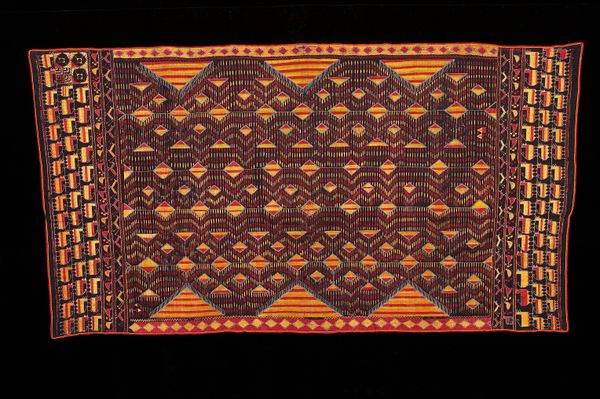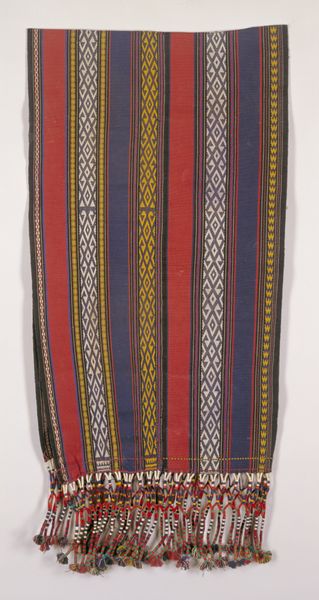
Woman's festival veil or wall hanging (Sainchi phulkari) c. early 20th century
0:00
0:00
silk, textile, cotton
#
pattern heavy
#
silk
#
textile
#
geometric pattern
#
abstract pattern
#
repetition of pattern
#
vertical pattern
#
pattern repetition
#
cotton
#
layered pattern
#
funky pattern
#
combined pattern
#
repetitive pattern
Copyright: Public Domain
This Phulkari, or "flower work," is a textile from Punjab, covered in stylized motifs of daily life. The animals—lions, dogs, elephants—echo creatures found in ancient Mesopotamian art, symbols of power and fertility. Note the procession of figures along the top, reminiscent of friezes decorating Greek temples. These processions often represent celebrations or rituals, linking the viewer to a community. This motif can be traced back to ancient Egyptian art, and continually reappears throughout history, finding its way to other cultural contexts. In the Renaissance, processions were adapted for triumphant entries and religious festivals. The re-emergence of these symbols is no accident, these forms tap into our collective memory. The animals and figures become vessels, filled with meaning, shifting and evolving across centuries, carrying echoes of human experience. This is a potent demonstration of culture and how visual symbols engage us on a subconscious level.
Comments
minneapolisinstituteofart almost 2 years ago
⋮
Figurative black-ground embroideries were produced in a small area of the old Indian Punjab. Created by household women for their own use as festival veils and wall hangings, they were essentially fantasy cloths, mixing mythological scenes and daily happenstance, stock village characters and exotic strangers, familiar animals and imaginary beasts, everyday objects and longed-for luxuries. Traditional yet highly idiosynchratic, these textiles are among the most whimsical creations of South Asia.
Join the conversation
Join millions of artists and users on Artera today and experience the ultimate creative platform.
